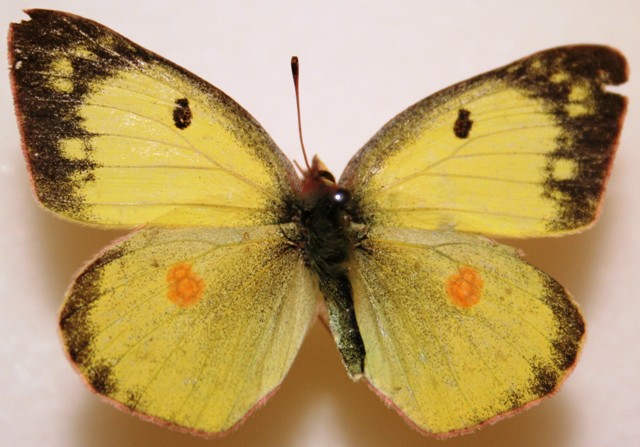Anti-Evolutionary Butterflies
Psalm 59:8-9
“But thou, O LORD, shalt laugh at them; thou shalt have all the heathen in derision. Because of his strength will I wait upon thee: for God is my defense.”
Most of the world’s 17,000 species of butterflies are delicate, colorful creatures. Geneticists have been studying the various patterns found on their wings, hoping to relate their findings to evolution. But so far, all their findings have failed to support evolution, and some even contradict evolution.
 Butterfly wings are covered with small scales. Some butterflies have scales containing molecular structures that look like tiny Christmas trees; these structures bend the light to create those iridescent colors. Other butterflies have scales containing pigment that produce the insects’ various colors and patterns. But color has another function. Clouded Sulfur butterflies are found at various altitudes in Colorado’s Rocky Mountains. Females of this species are generally darker than the males. In fact, the females tend to become darker in color as the altitude of their habitat rises. This has survival value because darker colors absorb more heat from the sun in the cooler, higher altitudes, enabling the normal rate of metabolism to be retained. However, the male butterflies prefer the lighter-colored females. This means that the advantage of having a darker color at higher altitudes would not be passed on to another generation. This is simply an example of rapid adaptation and is of no value to the theory of evolution.
Butterfly wings are covered with small scales. Some butterflies have scales containing molecular structures that look like tiny Christmas trees; these structures bend the light to create those iridescent colors. Other butterflies have scales containing pigment that produce the insects’ various colors and patterns. But color has another function. Clouded Sulfur butterflies are found at various altitudes in Colorado’s Rocky Mountains. Females of this species are generally darker than the males. In fact, the females tend to become darker in color as the altitude of their habitat rises. This has survival value because darker colors absorb more heat from the sun in the cooler, higher altitudes, enabling the normal rate of metabolism to be retained. However, the male butterflies prefer the lighter-colored females. This means that the advantage of having a darker color at higher altitudes would not be passed on to another generation. This is simply an example of rapid adaptation and is of no value to the theory of evolution.
As Scripture says, the foolishness of God is greater than man’s wisdom – in this case, evolution.
Prayer:
Father, I thank You for Your wisdom. Grant me understanding. Amen.
Notes:
Science News, 2/15/03, pp. 104-106, Susan Milius, “How the Butterfly Gets Its Spots.”